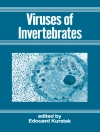In recent years it has become increasingly clear that chemical interactions play a fundamental role in aquatic habitats and have far-reaching evolutionary and ecological consequences. A plethora of studies have shown that aquatic organisms from most taxa and functional groups respond to minute concentrations of chemical substances released by other organisms. However, our knowledge of this "chemical network" is still negligible. Chemical interactions can be dividedinto two larger sub-areas based on the function of the chemical substance. First, there are interactions where chemical substances are toxic to other organisms and are used as a defence against consumers (including both herbivores and predators) or a weapon against competitors (allelopathy). Second, chemical substances may be used as a source for information of the environment; for example: how can I find the optimal habitat, the best food, the nicest partner, and avoid being eaten? Aquatic organisms are able to detect and respond to extremely low concentrations of chemical cues to answer all these questions. The book aims at connecting these intriguing chemical interactions with traditional knowledge of organism interactions. Chemical Ecology of Aquatic Systems covers a wide range of studies, both plant and animal, from different geographic regions and habitats – pelagic as well as benthic. Most of the chemical interactions are similar in freshwater and marine habitats and this book therefore strives at integrating work on both systems.
Christer Bronmark & Lars-Anders Hansson
Chemical Ecology in Aquatic Systems [PDF ebook]
Chemical Ecology in Aquatic Systems [PDF ebook]
Dieses Ebook kaufen – und ein weitere GRATIS erhalten!
Sprache Englisch ● Format PDF ● ISBN 9780191624162 ● Herausgeber Christer Bronmark & Lars-Anders Hansson ● Verlag OUP Oxford ● Erscheinungsjahr 2012 ● herunterladbar 6 mal ● Währung EUR ● ID 2801388 ● Kopierschutz Adobe DRM
erfordert DRM-fähige Lesetechnologie












